Digital Nomads
Working from the Road:
The Aspirations and Reality for Digital Nomads
Digital Nomads - people who embrace a location-independent, technology- enabled lifestyle - have moved from being eccentrics to mainstream in less than a decade.
The MBO Partners 2022 State of Independence research study found that 16.9 million American workers currently describe themselves as digital nomads, increasing 9% from 2021 and a staggering 131% from the pre-pandemic year 2019.
Number of American Digital Nomads
(in millions)
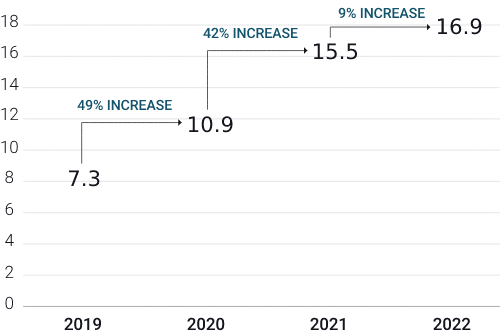
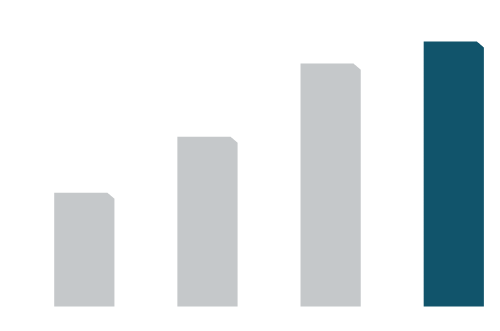
Digital nomads defy a single definition, yet all choose to combine working remotely and traveling for various reasons and lengths of time. Some nomads travel for years, regularly moving across countries and continents.
The COVID-19 pandemic is perhaps the single biggest impact on the growth and makeup of digital nomads. Traditional workers (those employed full-time by an organization) were unleashed from their offices, and many took to the road to embrace their newfound freedom. The number of digital nomads with traditional jobs increased by 9% in 2022, growing from 10.2 million in 2021 to 11.1 million in 2022. This is on top of the number of digital nomads with traditional jobs doubling in 2020 and increasing 42% in 2021.
Number of American Digital Nomads
(in millions)
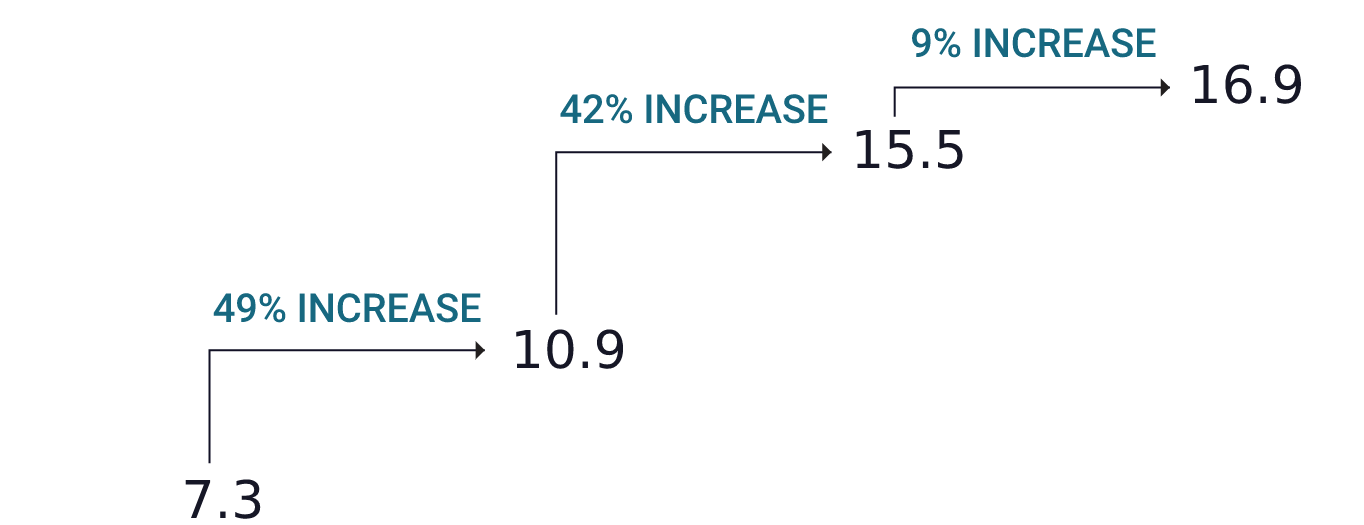
2019
2020
2021
2022
The number of Digital Nomads has increased 9% from 2021 and a staggering 131% from 2019.
Nomads are significantly more likely to have been self-employed than their traditionally employed counterparts. Three out of four digital nomad traditional workers (76%) had either started their own business or worked as an independent before joining the traditional workforce, vs. 40% of workers overall. They feel more in control of their own destiny and career futures, too.
Independent Workers are still Trekking
The number of digital nomads who are independent workers (freelancers, independent contractors, etc.) also increased in 2021, growing by 5%. Independent workers have always had substantially more location freedom than traditional job holders, so the impact of COIVD-19 on the number of independent workers who are digital nomads has been much less pronounced. The effect of the mix shift between types of digital nomads has been quite dramatic. In 2019, 44% of digital nomads were traditional job holders. In 2022, two-thirds (66%) of digital nomads are traditional jobholders.
Number of Digital Nomads by Worker Type
(in millions)
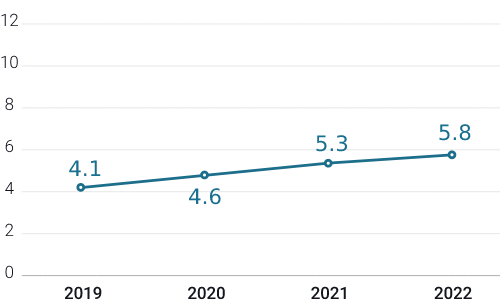

- Traditional Employees
- Digital Nomads
Digital Nomads Skew Young & Male
The pandemic also led to digital nomad demographic shifts. In 2019, 27% of digital nomads were Baby Boomers (born 1946-1964), but the share of Baby Boomers fell to 17% in 2020 and continued to decline to 12% in 2021.
In 2022, the Boomer share remained low at 13%. This decline is not surprising. Older workers are more concerned about COVID-19 and at a greater risk of serious illness, making them less interested in a nomadic lifestyle while the pandemic persists, and a similarly large number of Boomers left the workforce entirely during the pandemic.
In addition, more males than females 2022 were nomads; the exact breakdown is 59% male and 41% female, which is consistent with prior years, including prior to the pandemic.
Number of Digital Nomads by Worker Type
(in millions)


2019
2020
2021
2022
- Traditional Employees
- Digital Nomads
Percentage of Digital Nomads by Generation Type
Overall, digital nomads have gotten younger over the past four years. But older age groups continue to be well represented, with over one-third (37%) coming from the two older generations and almost one in 10 (9%) older than 60.
Digital Nomads: Technically Savvy, Skills-Oriented, Well-Educated Professionals
Digital nomads work in a wide variety of fields, with the main professions including information technology (21%), creative services (12%); education and training (11%); sales, marketing, and PR (9%); finance and accounting (9%); and consulting, coaching and research (8%). The unifying theme of these professions is that they can be performed remotely using digital tools and the Internet. The allocation of talent found across these professions has been consistent year-over-year.
Since most digital nomads rely on digital tools and the Internet in their work, it's not surprising that they report having stronger technical skills than those who aren't digital nomads. Eighty-six percent report they use technology to make themselves more competitive in their work, versus 47 percent of non-digital nomads. Digital nomads are also more likely to be early adopters of technology (74 percent) than non-digital nomads (42 percent).
Workers highly satisfied with their
work and lifestyle

Combining low-cost living with higher expat income, they can take advantage of income/living cost "geo-arbitrage." This enables lower-income digital nomads to fund their travels and spend less time working to support themselves and more time enjoying their adventures.
Digital nomads are also, on average, well-educated, with 59% having a college degree or higher (versus 35% for adult Americans) and 26% reporting having an advanced degree (versus 13% for adult Americans).
Early adopters
Vs.
Non-digital nomads
Digital Nomads Among the Most Satisfied with
their Work and Income
Consistent with prior years, digital nomads are among the workers most satisfied with their work and lifestyle.
A key reason for this high level of satisfaction is that regardless of how much they make, most digital nomads are satisfied with their earnings. More than 4 out of 5 (82%) report either being very satisfied (51%) or satisfied (31%) with their income. This is higher than the income satisfaction reported by workers who aren't digital nomads, with 71% reporting either being very satisfied (32%) or satisfied 39%) with their income.
Workers Highly Satisfied With Their Work and Lifestyle

Combining low-cost living with higher expat income, they can take advantage of income/living cost "geo-arbitrage." This enables lower-income digital nomads to fund their travels and spend less time working to support themselves and more time enjoying their adventures.
Definition

You engage in geoarbitrage when you change where you live (and work) to take advantage of different prices for the same assets in various markets
It is not surprising that nomads report that being able to travel when and where they want is the top benefit of being a nomad.
The Hard Things About Living Life on the Road
Although digital nomads report high satisfaction levels, being nomadic is not without challenges.The top challenges reported by current digital nomads are personal safety (34%), being away from family and friends (32%), time zone differences making work difficult (30%), loneliness (26%), travel logistics (25%) and managing work and travel (25%).
Top Challenges Reported by Current Digital Nomads
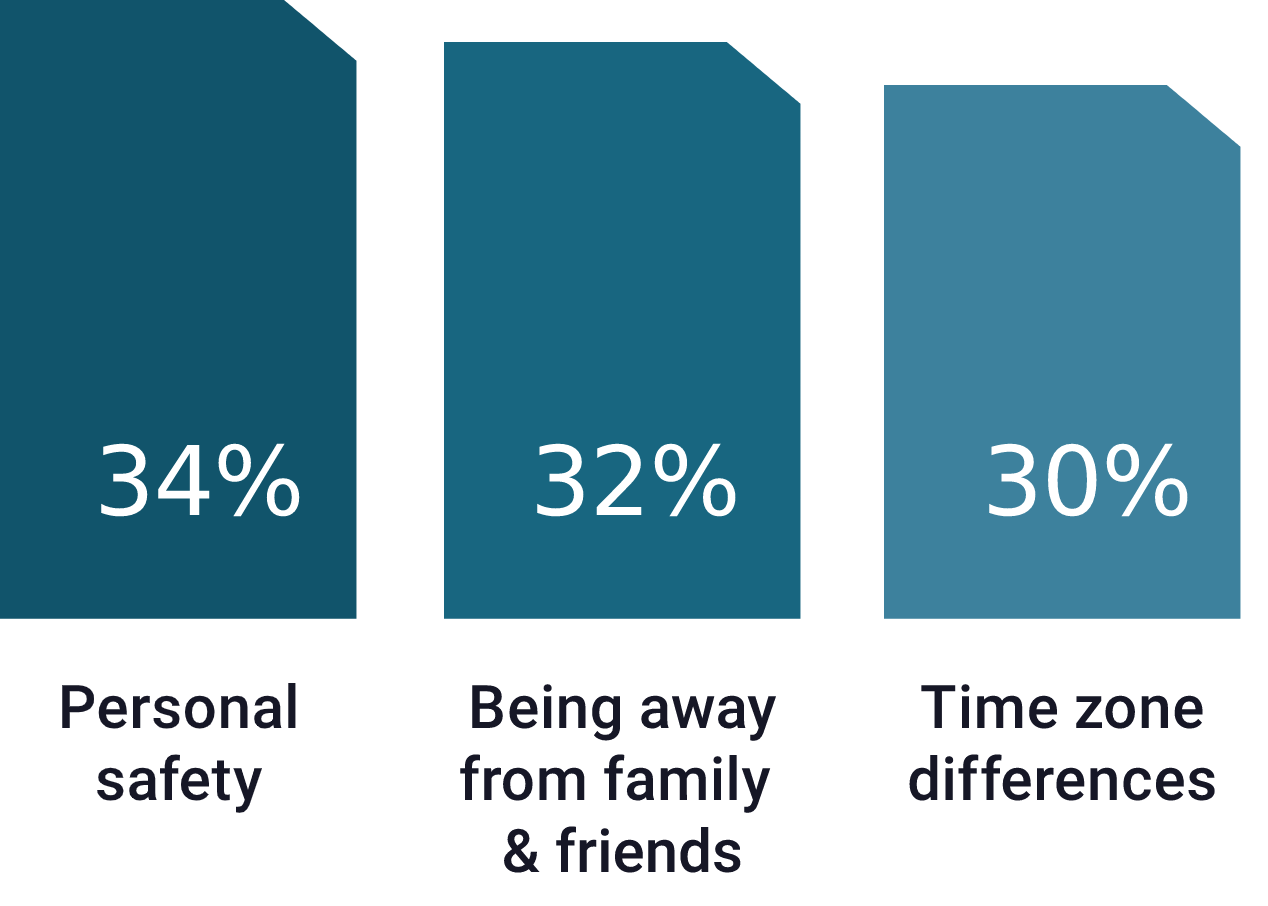
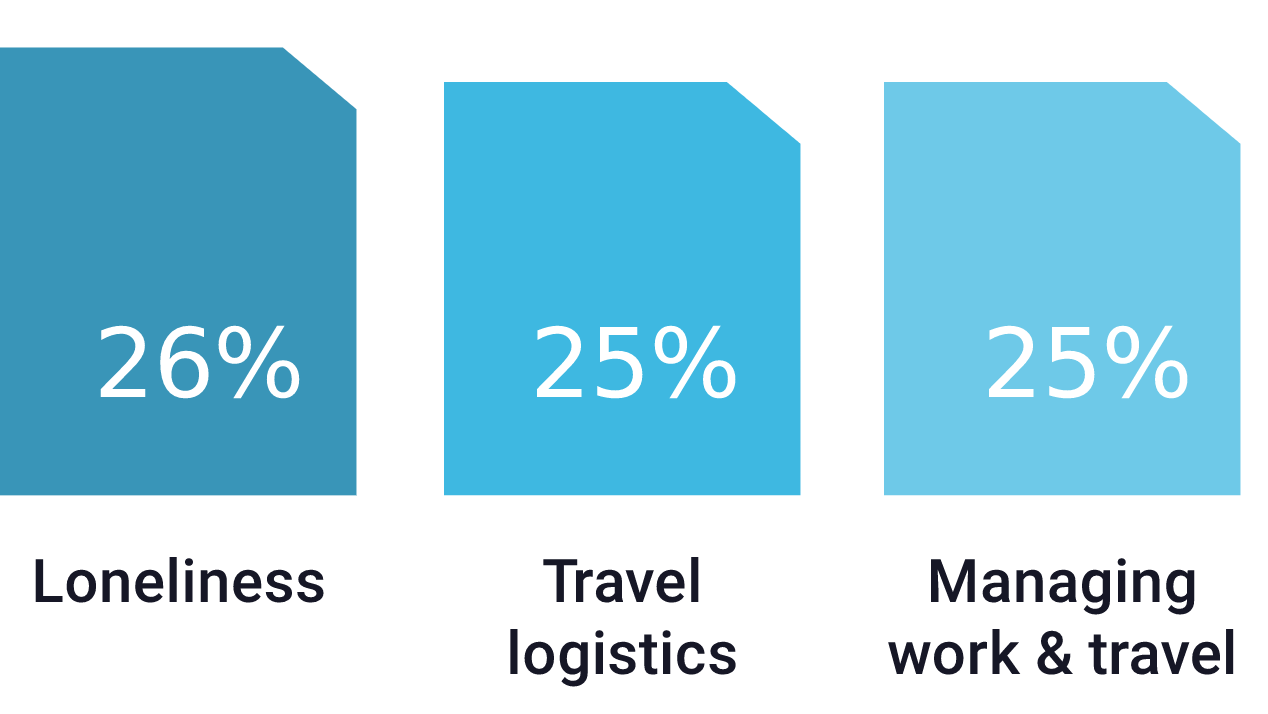
Most Digital Nomads Plan to Continue Working
This Way
More digital nomads are reporting that they plan on continuing to be nomadic over the next 2-3 years.
In 2022, 69% of digital nomads report planning to continue as digital nomads for at least the next 2-3 years. This is up from 54% in 2021 and 49% in 2020. The main driver of this increase comes from digital nomads with traditional jobs. The share planning on continuing as digital nomads for at least the next 2-3 years increased from 49% in 2021 to 71% in 2022.
Based on interviews, this increase is due to more employers allowing their workers to continue as digital nomads, and possibly also the strongly pent-up demand for travel caused by the pandemic.
The shift to remote work has created the opportunity, or at least the possibility, that becoming a digital nomad is an achievable goal.
Becoming a Digital Nomad: A Popular Aspiration
The digital nomad trend has long attracted traditional media attention and a strong social media following. Popular digital nomad and #VanLife blogs, videos, and Instagram accounts have created a spectator sport inspired by pictures and stories of faraway places, exotic locations, and happy nomads-often with dogs-in beautiful and/or culturally exciting places.
We asked adult Americans who aren't digital nomads if they plan on becoming digital nomads over the next 2-3 years.
Adult Americans That Plan on Becoming Digital Nomads

The Bright Future of Digital Nomadism
After the explosive growth of American digital nomads in 2020 and 2021, this year has seen a relatively modest increase of 8% in their numbers. This slowdown was expected due to the pandemic easing, life and work starting to return to normal, and more workers expected to show up at the office at least a few days a week.
Other factors driving the growth of digital nomads include: